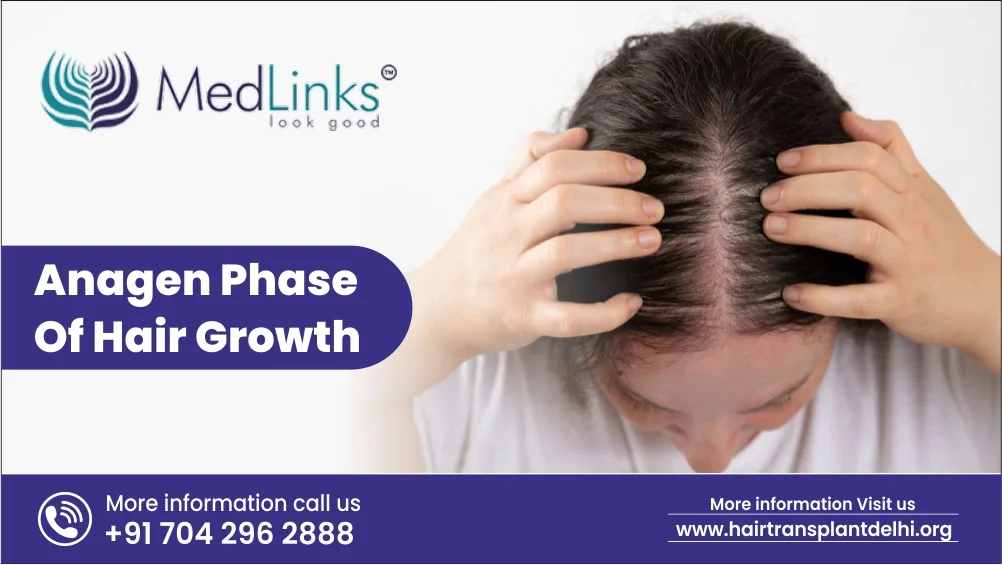The catagen phase is the second stage of the hair growth cycle, often referred to as the transition phase. Although it is much shorter in duration compared to the other stages, it plays a crucial role in the life cycle of hair. During this phase, the hair stops actively growing, and the follicle prepares for the next phase, which is shedding. Understanding the Catagen Phase of Hair Growth is essential to grasp how hair naturally grows, transitions, and eventually renews itself.
In this blog, we’ll explore what happens during the catagen phase, its significance in the hair growth cycle, and how it impacts hair health.
What is the Catagen Phase?
The catagen phase is a brief, transitional stage in the hair growth cycle that typically lasts two to three weeks. It follows the anagen phase, where hair actively grows, and precedes the telogen phase, where hair rests before shedding. Although short, this phase marks an important shift in the hair growth process.
During the catagen phase, hair follicles undergo significant changes:
- Growth Stops: Hair strands cease growing as the hair follicle shrinks and detaches from the blood supply.
- Follicle Shrinking: The base of the follicle contracts and moves upward, pushing the hair strand closer to the scalp surface.
- Formation of Club Hair: The hair strand that forms in the catagen phase is referred to as a “club hair.” These hairs are no longer growing and are preparing to shed during the next phase of the hair cycle.
This phase is a normal and necessary part of the hair growth cycle. It allows the hair follicles to regenerate, ensuring that healthy new hairs can grow after the resting and shedding stages are complete.
The Transition from Growth to Rest
The catagen phase is essentially the bridge between active hair growth and hair shedding. It’s a time of structural changes within the hair follicle. Here’s what happens:
- Cessation of Hair Growth: After the anagen (growth) phase, the hair follicle stops producing new cells, halting hair growth.
- Detachment from the Blood Supply: The follicle shrinks and cuts off its supply of nutrients, causing the hair strand to lose its source of nourishment.
- Formation of the Club Hair: As the follicle shrinks, the hair strand becomes a “club hair,” which is firmly held in place by the follicle but no longer connected to the scalp’s blood supply.
- Upward Movement: The hair follicle moves closer to the surface of the scalp, preparing to release the hair strand during the shedding phase.
The catagen phase is essential because it signals that the hair follicle is preparing for renewal. Without this transitional phase, the hair would not be able to regenerate properly.
How Long Does the Catagen Phase Last?
The catagen phase typically lasts between two and three weeks. Unlike the anagen phase, which can last several years, the catagen phase is short and affects only about 1-2% of your hair at any given time. Once the catagen phase is complete, the hair enters the telogen phase, where it rests before eventually shedding.
The Importance of the Catagen Phase in Hair Health
Though brief, the catagen phase plays a vital role in ensuring a healthy hair growth cycle. This stage allows hair follicles to undergo important changes, such as shrinking and detaching from their blood supply, which is crucial for hair regeneration.
Here are some key reasons why the catagen phase is important for hair health:
1. Follicular Renewal
The catagen phase allows hair follicles to “reset” and prepare for a new cycle of growth. By shrinking and detaching from the blood supply, the follicle creates space for new hair to grow once the old hair is shed.
2. Prevents Continuous Growth
Without the catagen phase, hair follicles would continuously produce hair without taking time to renew themselves. This would lead to weakened, damaged hair that is more prone to breakage. The catagen phase helps regulate the cycle, ensuring that new, healthy hair replaces old hair.
3. Hair Cycle Balance
The hair growth cycle depends on the balance between all four phases: anagen (growth), catagen (transition), telogen (rest), and exogen (shedding). The catagen phase is critical because it marks the end of one growth cycle and prepares the follicle for a new cycle. Disruption in this phase can result in hair thinning or excessive shedding.
How Does the Catagen Phase Affect Hair Loss?
In cases of hair loss, such as alopecia, the catagen phase can become disrupted, either shortening or prolonging, which may affect overall hair growth. Certain conditions or factors may cause hair to enter the catagen phase prematurely or may increase the number of hairs transitioning to this phase simultaneously, resulting in more rapid hair shedding.
Premature Catagen Phase
When hair enters the catagen phase prematurely, it stops growing earlier than it should, leading to hair thinning and reduced hair density. This is often seen in conditions like telogen effluvium, where a stressful event or sudden illness triggers many hair follicles to enter the resting and shedding phases before completing the full anagen phase.
Extended Catagen Phase
In rare cases, the catagen phase may be prolonged, delaying the transition to the telogen and exogen phases. This can slow down the hair renewal process, as old hair is not shed efficiently, and new hair cannot grow in its place.
Can You Influence the Catagen Phase?
While the catagen phase is a natural part of the hair growth cycle, certain factors can influence how long hair stays in this phase or how efficiently the transition happens:
1. Healthy Lifestyle
Maintaining a healthy lifestyle, including proper nutrition, stress management, and regular exercise, can help regulate the hair growth cycle and ensure that the catagen phase occurs as part of a balanced cycle.
2. Avoiding Damage
Excessive heat styling, harsh chemical treatments, and rough handling of hair can damage hair follicles and cause them to enter the catagen phase prematurely. Taking care of your scalp and hair can help prolong the anagen phase and prevent premature transition into the catagen phase.
3. Professional Hair Treatments
In some cases, treatments like PRP (Platelet-Rich Plasma) therapy, minoxidil, or other hair growth-promoting therapies may help support healthy hair growth by targeting the follicles at different stages of the hair cycle.
Conclusion
The catagen phase, though short, is a crucial step in the hair growth cycle, marking the end of the active growth stage and the beginning of hair renewal. While only a small percentage of hair is in this phase at any given time, understanding its role is important for maintaining healthy hair and managing conditions like hair thinning or excessive shedding.
By taking good care of your hair and scalp, maintaining a healthy lifestyle, and using professional treatments when necessary, you can support a healthy hair cycle and ensure that each phase, including the catagen phase, functions optimally.






